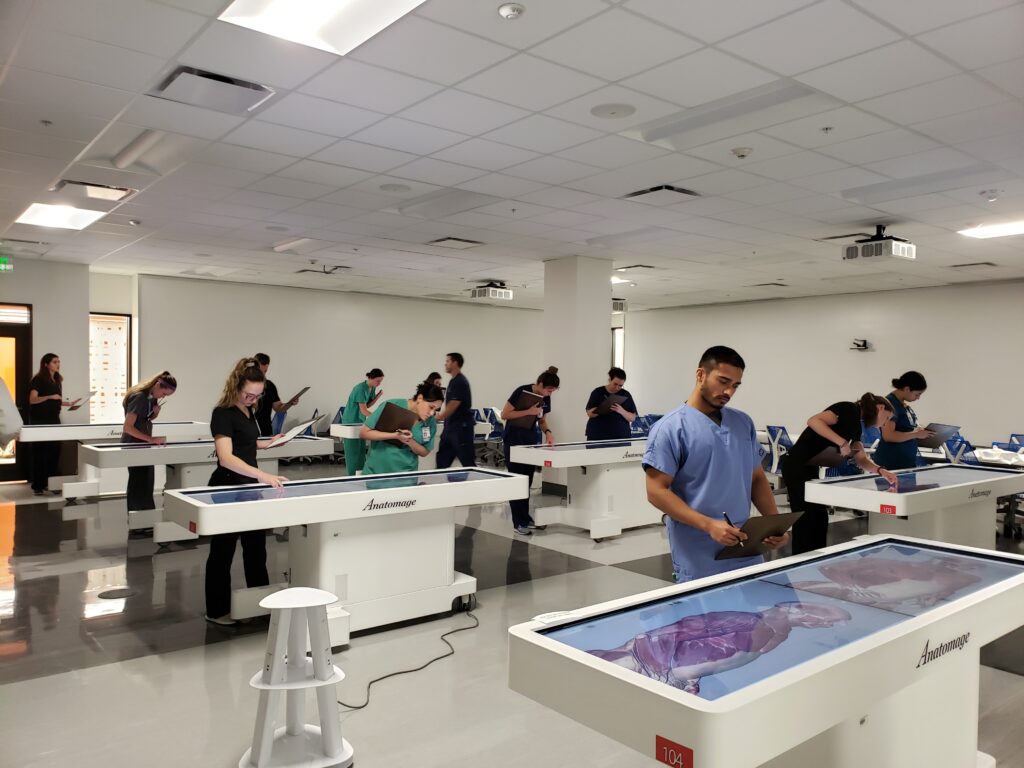As headlines consistently remind us, healthcare is not only unevenly distributed, there remain deeply entrenched inequities and adverse outcomes for some, especially when it comes to gender. One foundational place to begin to change this dynamic is healthcare education, particularly around how we teach human anatomy.
A more inclusive healthcare education intentionally focused on how pathologies affect all bodies can ultimately lead to better quality of care and help build a more equitable health system for all. Despite the fact that many leaders and healthcare practitioners recognize access to healthcare as a fundamental human right, systemic inequities impact the kind of care many Americans receive. In the U.S., your zip code, gender identity, and race and ethnicity are some of the key components that determine your health outcomes. The clinical trials meant to test the efficacy of our treatments do not accurately reflect our population; the majority (79.7%) of clinical trial enrollees are white. And the majority of physicians providing care are white (62%) and male (61%).
The foundation of textbook anatomy learning is the white male, presented as a “universal model” of the human being. While we might appreciate the historical context for why and how this came to be, we must also ask ourselves, a quarter of the way into the 21st century, why we willingly accept such a myopic and indeed dangerous baseline for educating healthcare and medical practitioners today. At a time when the world of customization is nearly ubiquitous, we settle for the most limited version of the physical human experience, neglecting vast swaths of the human family in our efforts to better understand how to diagnose and treat patients.
As an example, Asian and female anatomies have been historically underrepresented in medical education. Underrepresentation of Asian and female anatomy can have negative impacts on overall clinical practice which may lead to a lack of treatment or clinical understanding of unique challenges faced by Asian or female patients. Limited research on Asian-specific diseases (or any other ethnically specific diseases) often results in inadequate treatment, or worse yet, in harmful interventions as has been documented in cases where medication dosages are inaccurate and can potentially cause harm or lack efficacy.
According to research from the National Institutes of Health, lack of diversity and inclusion in clinical research has a direct impact on patient care. Experts there agree that while there are no instant solutions, all change starts with awareness. More fundamentally, lack of female anatomy and Asian representation contributes to limited research on how these groups respond to certain medications and treatments.
The intersection of technology and healthcare holds a promising opportunity to change this frustrating trajectory. Tools like the Anatomage Table provide 3D visualization of inclusive anatomy representation, with an opportunity to explore various morbidities and how they appear. The Anatomage Table enables a holistic exploration of anatomical diversity in both male and female bodies, featuring two cadavers in each gender. With its digital cadavers developed from actual human bodies, the Table provides a highly accurate and comprehensive database for researchers, educators and medical professionals to dive deeper into human anatomy. The cases translate medical knowledge into clinical experience better preparing students to be real-world healthcare providers with more inclusive and empathetic points of reference. Seemingly small changes like the inclusion of the world’s most accurate, 3D female reproductive anatomy, can both better prepare future practitioners and improve female health outcomes.
Further widening the opportunities for more diverse practitioners with novel partnerships can address the issues of diversity in the medical professions in the long term. Providing high schoolers with hands-on learning experiences that are grounded in high-quality instructional materials with real-world applications can transform a student’s sense of their own opportunities and abilities. The Anatomage Tournament, a partnership with HOSA, engages students early in their academic careers and focuses on real-world workforce needs. It also offers a welcoming and inclusive platform for students to gain practical experience and prepare for a career in healthcare.
How we educate future healthcare providers has the potential to influence the kind of care future patients will receive. Our next generation of healthcare providers must be equipped with the fundamental understanding and hands-on skills to care for all patients, understanding the variety of human conditions. We sit poised on the edge of a generational opportunity to build more equitable health outcomes with more inclusive healthcare education.
By: Jack Choi, Founder and CEO of Anatomage
The Anatomage Table is the most technologically advanced 3D anatomy visualization and virtual dissection tool for anatomy and physiology education and is being adopted by many of the world’s leading medical schools and institutions. It has been featured at the TEDTalks Conference, PBS, Fuji TV, and numerous other journals for its innovative approach to digital anatomy presentation. The operating table form factor combined with Anatomage’s renowned radiology software and clinical content separates the Anatomage Table from any other imaging system on the market. Anatomage Table 9 is the current software version on the Table.
